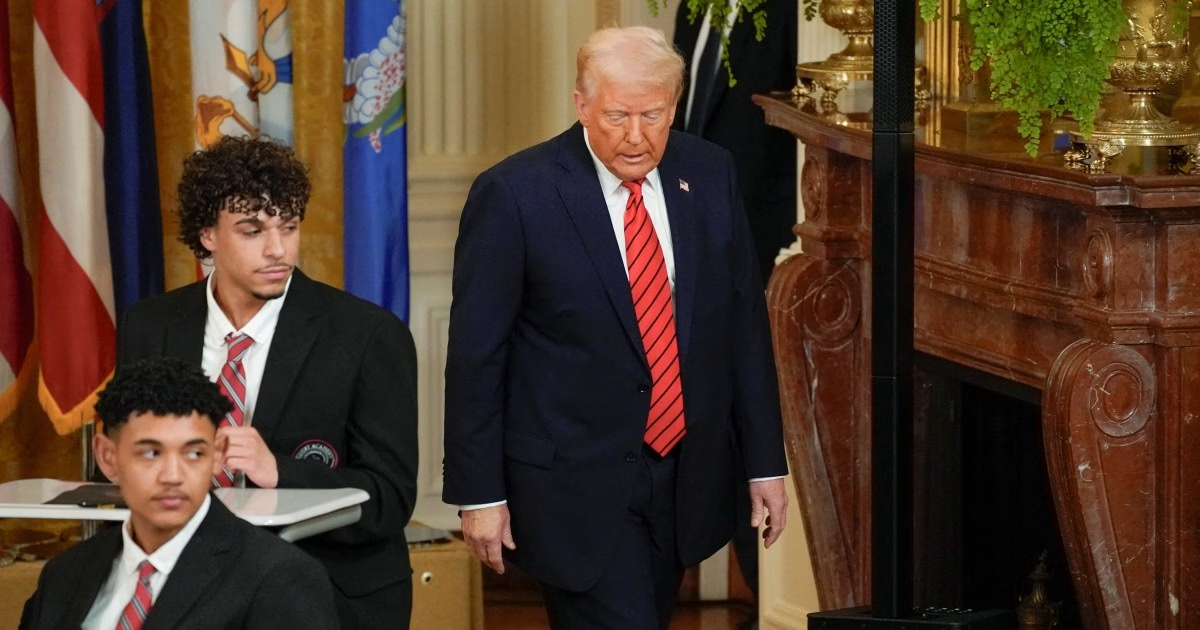As part of his controversial campaign pledge, United States President Donald Trump has signed an executive order to dissolve the country’s Department of Education. The department, which has long been criticized by conservatives for allegedly being tainted by liberal principles and for taking education control away from the states, could face constitutional hurdles in the rollout of this order.
The Department of Education, established in 1979 by President Jimmy Carter, oversees the national education policy in the United States. It is responsible for distributing federal loans and aid for education, such as the Pell Grant for low-income students, collecting data on the US education system, identifying issues, and enforcing federal education laws regarding non-discrimination and civil rights.
Even before the executive order was signed, Trump’s administration has been reducing the department’s workforce. The department’s staff has decreased by nearly half, from 4,133 workers to 2,183, with 600 employees having accepted voluntary resignation and the remainder placed on administrative leave, aligning with broader federal government workforce cuts led by Elon Musk’s Department of Government Efficiency (DOGE).
President Trump’s executive order, called “Improving Education Outcomes by Empowering Parents, States, and Communities,” directs Secretary of Education Linda McMahon to manage the department’s closure. The order asserts that shutting down the department will allow children and their parents to escape a failing system. However, the data from the National Assessment of Educational Progress (NAEP) shows that student performance in reading and mathematics has not experienced significant changes since 2022, with average scores for reading among eighth graders remaining steady since the early 1970s and mathematics scores increasing until 2012 before a slight decline. The US ranks 19th out of 41 countries in terms of student skill based on the Better Life Index created by the Organisation for Economic Cooperation and Development (OECD), with students performing above the OECD average in reading, literacy, mathematics, and science.
Despite potential opposition, Trump intends to continue delivering loans and grants. The department is the largest provider of loans for US college students, with an outstanding loan balance of $1.69 trillion for approximately 43 million borrowers. Trump assured that these services will be preserved and redistributed to other agencies and departments, with states set to take over most of the department’s functions. However, for the executive order to take effect, approval from Congress is necessary, although this might not be easily obtained. While some Congress members have shown support for Trump’s initiative, others have expressed opposition, which could make it challenging for the legislation to pass in both houses of Congress.
The Department of Education, established in 1979 by President Jimmy Carter, oversees the national education policy in the United States. It is responsible for distributing federal loans and aid for education, such as the Pell Grant for low-income students, collecting data on the US education system, identifying issues, and enforcing federal education laws regarding non-discrimination and civil rights.
Even before the executive order was signed, Trump’s administration has been reducing the department’s workforce. The department’s staff has decreased by nearly half, from 4,133 workers to 2,183, with 600 employees having accepted voluntary resignation and the remainder placed on administrative leave, aligning with broader federal government workforce cuts led by Elon Musk’s Department of Government Efficiency (DOGE).
President Trump’s executive order, called “Improving Education Outcomes by Empowering Parents, States, and Communities,” directs Secretary of Education Linda McMahon to manage the department’s closure. The order asserts that shutting down the department will allow children and their parents to escape a failing system. However, the data from the National Assessment of Educational Progress (NAEP) shows that student performance in reading and mathematics has not experienced significant changes since 2022, with average scores for reading among eighth graders remaining steady since the early 1970s and mathematics scores increasing until 2012 before a slight decline. The US ranks 19th out of 41 countries in terms of student skill based on the Better Life Index created by the Organisation for Economic Cooperation and Development (OECD), with students performing above the OECD average in reading, literacy, mathematics, and science.
Despite potential opposition, Trump intends to continue delivering loans and grants. The department is the largest provider of loans for US college students, with an outstanding loan balance of $1.69 trillion for approximately 43 million borrowers. Trump assured that these services will be preserved and redistributed to other agencies and departments, with states set to take over most of the department’s functions. However, for the executive order to take effect, approval from Congress is necessary, although this might not be easily obtained. While some Congress members have shown support for Trump’s initiative, others have expressed opposition, which could make it challenging for the legislation to pass in both houses of Congress.







